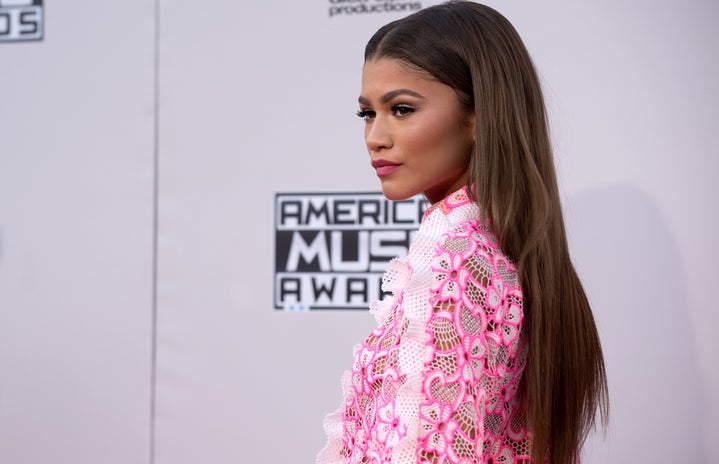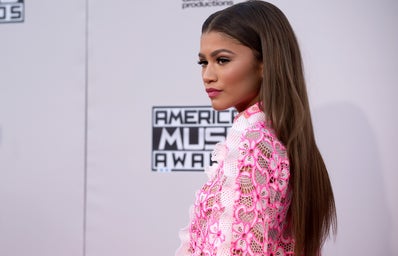I remember a time when Jennifer Lawrence was Hollywood’s It Girl. Lawrence, then an up-and-coming young actress, was widely dubbed a “cool girl”. The cool girl moniker, seized from the pages of Gillian Flynn’s novel Gone Girl, is introduced by the book’s protagonist as follows: “Men always say that as the defining compliment, don’t they? She’s a cool girl. Being the Cool Girl means I am a hot, brilliant, funny woman who adores football, poker, dirty jokes, and burping, who plays video games, drinks cheap beer”.
Lawrence’s time as a cool girl has passed. In the time since, the term has come to be largely eviscerated as less of an actual woman and more a stand-in for what men want women to be – themselves made female (and of course, cisgender). This evisceration is so ubiquitous that it happens in Gone Girl itself.
So, when it came to my actual task here – to examine Zendaya’s rise as an “It girl” in Hollywood – I couldn’t help but have my first thought be that well, she seemed antithetical to the image of a cool girl.
But what did that mean?
Sure, she’s not a cool girl. But what is she? The simple answer: clean. Not squeaky clean, in that former Disney star type of way (although, ironically, Zendaya is a former Disney star!) But no, it’s not as though I look at Zendaya and assume she doesn’t swear or drink – that seems unlikely. It’s more that she’s miraculously unmarred by any real whiff of celebrity scandal.
Zendaya has a steady sort of presence, so much so that she’s noted in one interview to be an “old soul”. Even her climb to stardom has been steady, if unrelenting. Zendaya went to Hollywood as a pre-teen/early teen, booked her first part on Disney’s Shake It Up at roundabout 13, met her stylist a few years later, continued booking parts, eventually began scoring lucrative partnerships with designer brands and later went through the celebrity romance rumor mill a few times, most prominently with Spider-Man costar Tom Holland. See? This is kind of standard for a young Hollywood star – the early climb to fame. But it’s after all a climb – and climbing implies sureness and steadiness, something that I’m arguing fits very neatly into Zendaya’s image.
So, how has Zendaya cultivated this “sure and steady” celebrity image, and what precisely does it entail?
One word: ubiquitousness.
Component 1 of this ubiquitousness: Zendaya, it must be said, is everywhere – an untold number of magazine covers, the face of multiple luxury brands, walking red carpets, in films, in freaking Euphoria (Gen Z’s answer to Skins).
Now, there are perils to being everywhere, especially in the Hollywood and media landscape. As activist and actress Jameela Jamil explains, overexposure is a killer, and the media loves to pontificate about young starlets only to turn around and then tear them down. Anne Hathaway, Taylor Swift and yes, Jennifer Lawrence is all victims of this tactic. How then, has Zendaya avoided this pitfall? Well, I’d say the key to this is how her ubiquitousness works. See, Zendaya, despite being world-famous and adored in turn, is pretty normal. Or at least, several magazine features paint her as normal. In her 73 Questions With Vogue interview, Zendaya hangs out with her dog Noon just like any regular twenty-something might do. She’s close to her parents and siblings. She likes photography. A Vogue feature quotes her as being “a homebody who spends her time watching movies and listening to true-crime podcasts”. Zendaya: Just Like Everyone Else.
Admittedly, this is a kind of bland, quotidian image for a celebrity. After all most celebrities have shticks: Ryan Reynolds is a wise guy with sarcastic barbs, Taylor Swift is the multi-hyphenate songwriter storyteller. What is Zendaya? Surely not just a regular 25-year-old? Well, on one hand, she obviously isn’t “normal” insofar as she’s a celebrity. On the other hand, yeah, she’s pretty normal.
And therein, oddly, lies the beauty of Zendaya’s image. In a lot of ways, she’s just enough of a blank slate (with the exception of her outspokenness in uplifting fellow black women and other racial issues) for anyone to project whatever they want to onto her. It’s no secret that parasocial relationships are what partially uphold celebrities’ prominence in society. With Zendaya, the parasocial element is heightened by the fact that she can fulfill whatever role you need her to – someone who feels like your bestie, your sister, your cousin… Zendaya can be everyone’s “It girl”, because her true personality is carefully hidden away, under lock and key. Also, it must be said that for the celebrity onlooker, this relationship is mutually beneficial – you can love Zendaya because she’s whatever you want her to be and she gains another admirer to boost her profile. As a result, I’d wager that Zendaya is everyone’s “It girl.”
So –
All hail Zendaya (wink wink).
Author’s Note: I haven’t mentioned Zendaya’s status as a person of colour/young Black woman too much in this article, but I by no means want to disregard or diminish it. Her prominence as a young woman of colour and her having grown up in proximity to the Black Panther Party’s headquarters are important markers of her racial identity and she remains an aspirational figure for many people of colour.


